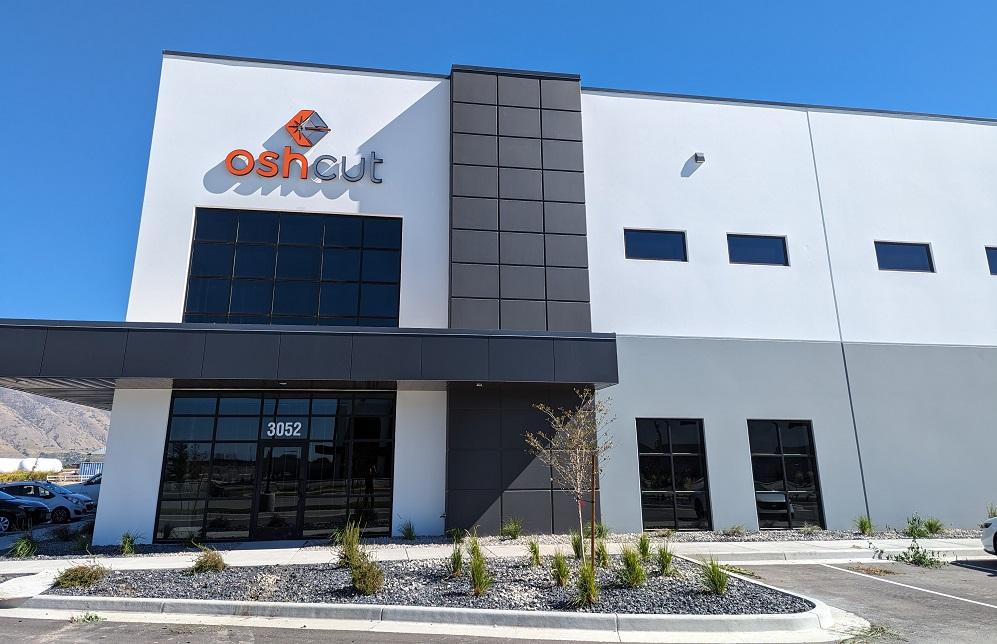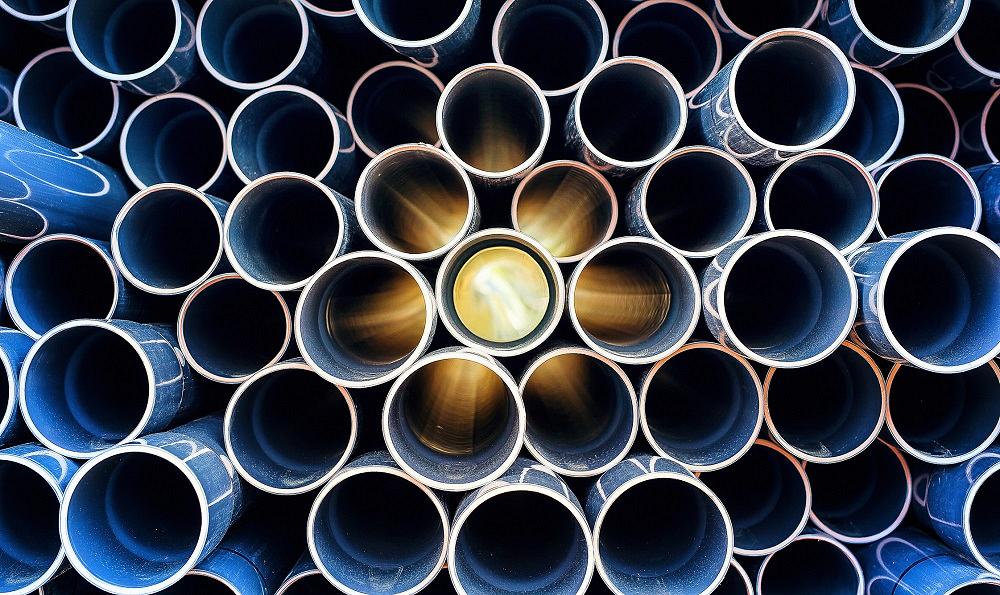CEO/Co-founder
- FMA
- The Fabricator
- FABTECH
- Canadian Metalworking
Categories
- Additive Manufacturing
- Aluminum Welding
- Arc Welding
- Assembly and Joining
- Automation and Robotics
- Bending and Forming
- Consumables
- Cutting and Weld Prep
- Electric Vehicles
- En Español
- Finishing
- Hydroforming
- Laser Cutting
- Laser Welding
- Machining
- Manufacturing Software
- Materials Handling
- Metals/Materials
- Oxyfuel Cutting
- Plasma Cutting
- Power Tools
- Punching and Other Holemaking
- Roll Forming
- Safety
- Sawing
- Shearing
- Shop Management
- Testing and Measuring
- Tube and Pipe Fabrication
- Tube and Pipe Production
- Waterjet Cutting
Industry Directory
Webcasts
Podcasts
FAB 40
Advertise
Subscribe
Account Login
Search
Great laser tube cutting machine, rough delivery
Lessons learned from a “foundational” mistake in one Utah metal fabrication shop
- By Caleb Chamberlain
- February 17, 2024
If you follow my monthly columns, you’ll know that we recently purchased and installed a new laser tube cutting system. In my December 2023 article, I wrote about the new machine and the software we designed to support it. Unfortunately, it was far more expensive and challenging to get started than we anticipated. The machine arrived damaged, and we made some big mistakes. But we also did a few things right. What follows is an honest take on what we’ve learned. As we dive in and discuss what happened, some of you will shake your heads and wonder what we were thinking. You should. In retrospect, we are doing the same.
The Beginning
We had known for a while that we would need to expand, but moving is an expensive proposition. We crammed more and more production capacity into our small Orem, Utah, shop, adding new equipment like bridge cranes to better utilize space. Our plan was to build a new shop in our rural hometown of Delta, Utah, and bring jobs back to the small community. We even purchased property and started hiring locals, with the promise that we’d build and move within the year. Business was good, we were cash-flowing well, and back-of-napkin cost estimates looked great.
Predictably, we underestimated construction costs and timelines. What began as a manageable $3 million project ballooned to $6 million before we started second-guessing our trajectory. We could manage a construction loan that size, but it would stretch our financial ratios to their limits: We’d have a nice big building, but nothing new to put in it. If we invested that much, we wanted to offer our customers something new. When the city told us they’d fight us on water rights, we finally decided to scrap the project. We were back to square one, with a lot of work and too little space.
New Perspectives
Around the same time, I confided in another successful business owner about our stalled plans, and he expressed amazement that we were thinking about building at all. “You can buy a million-dollar laser and generate $3,000 per hour in revenue, but you were seriously considering investing $6 million in an empty building?” A lightbulb went off in my head. We were so fixated on building our dream factory and going home that we almost made what seems now to be an obvious financial mistake.
I mean, we weren’t going in half-cocked. We ran the numbers and showed that loan payments on a building saved a lot of money and equity compared to leasing an equivalently sized space. The difference stacked up to millions of dollars over time. But we hadn’t accounted for the opportunity cost of using up safe leverage on infrastructure that produced zero value without even more investment. A $6 million building on its own doesn’t offer much. Five or six flatbed lasers? That’s something else.
So we shifted gears. We still had cash sitting in a bank account, losing value to inflation (which in 2022 was out of control). We needed to put it to work. That’s when we realized that, with a new leased space, we could install a state-of-the-art laser tube cutting system and tie it into our instant online quoting and ordering system.
Due Diligence
This would be a big move for us. We hoped to expand to a new location with at least 50,000 sq. ft. of space, so that we could move our existing sheet metal operation and grow it alongside the new laser tube cutting service. That’s what we ultimately did, at a monthly lease price of $55,000. But before pulling the trigger on such an expensive space and expensive equipment, we did some research. We reached out to existing customers and identified $6 million in annual opportunities for tube cutting from those customers alone. We reasoned that our existing customer base would easily justify the investment, to say nothing of the opportunity to grow our addressable market with a new, unique online service.
We also sanity-checked our financial performance and weighed the risks. Our sheet metal operation was still producing healthy cash flow, easily enough to cover loan payments, lease payments, and other operating expenses in the new facility, and then some. This would prove more important than we expected.
Off to the Races
In March 2023, we decided to pull the trigger. By mid-September, we had a new $2 million laser tube cutting system on the floor. Signs of trouble appeared immediately when we unwrapped the machine: The shipping brackets securing the chuck came loose or broke in transit. Maybe the brackets weren’t strong enough, or maybe the bolts weren’t tightened correctly. We don’t know. But whatever the case, that massive chuck slid up and down the rail, crashing into things every time the truck accelerated. It finally crashed so hard that it sheared the bracket almost in half and lodged on one end of the machine, breaking cables and ducts in the process.
The manufacturer was on top of it, though, and the obvious problems were repaired right away. The install seemed to be going well. Three weeks in, the techs on-site expressed confidence that we’d have a working machine within a week. That was great news!

OSH Cut's new Spanish Fork, Utah, location has enough space to allow the company to move its existing sheet metal operation and grow it alongside its new tube cutting service.
The software was ready, the machine manufacturer was confident we were on track, and we were eager to get the tube cutting service cranking. So, throwing caution to the wind, we launched the new service. Leading up to the new release, we had people calling customers full time, lining up work, prepping jobs, and even manually quoting (we never do that—our quoting is all automated and online, so manual quotes were new and labor-intensive for us). We sent out mass emails to new customers and launched online ad campaigns. Our most excited and interested customers started sending work our way.
We’ll Be Online “Next Week”
As chance would have it, one week turned into two, then three, then four. We had promised our customers a service we couldn’t yet offer, and then failed to deliver. Meanwhile, the laser tube cutting machine was having all kinds of problems. The chiller had a cracked copper line that leaked water. A 480-V breaker inside the machine was arcing and melting (a terrifying prospect, if you know what 480-V power will do). And the installation crew from the manufacturer just couldn’t get the laser aligned and leveled. It’d cut well when the chuck was on one end of the machine, and horribly on the other. At the end of October, we still didn’t have a properly functioning machine.
Our laser tube cutter limped its way into production. We cut a lot of test jobs and started fulfilling orders, but it wasn’t cutting to spec. Things weren’t adding up. Then I got a call from our R&D director that chilled me to the bone.
That’s a Cold Joint
Our laser tube cutter’s foundation requirements called for an 8-in.-thick slab rated at 3,700 PSI, with two layers of #5 rebar in a 12-in. grid. We were entering a brand new building with a holistically poured 8-in. slab, and we weren’t excited about ripping a section out to repour. The landlord wasn’t excited about it either. We reasoned that the machine manufacturer was being conservative, and others figured that our pad was more than thick enough. So, we consciously decided not to redo the foundation.
More than six months after we made that decision, Jacom (my brother, a cofounder and our R&D director) called me one day with bad news. “We put the machine on top of a cold joint.” That was a bad day. Sometimes you find something out and it literally makes you feel sick. This was one of those moments.
A holistic pad might have been fine, but one half of our machine was on one pad, and the other half on a separate pour. The joint was so smooth and perfect that you couldn’t tell, but as chance would have it, a satellite snapped a photo of the construction site during construction, and that historical photo told the whole story. There were two different pads, and our $2 million machine was straddling them.
We estimated that it’d take three months to rip out the foundation elsewhere on the new shop floor, pour a new pad, wait for it to cure, and then move the machine onto it. Our monthly cash outlay to have the new shop space, service the tube laser loan, and cover other expenses exceeded $80,000 per month. We’d sunk over $50,000 into ads, we were already a couple months behind, and customers were angry. We had given ourselves the biggest black eye ever, and we were facing another three-month delay. All told, this mistake was about to cost us half a million dollars because we didn’t want to spend $50,000 to pour a new foundation!
But Wait, There’s More!
Even after we identified the foundation issue, something else wasn’t adding up. The laser manufacturer figured it out, leveled the machine, and immediately cut a test part, but the machine still wasn’t cutting to spec. It wasn’t just a leveling issue, and in fact, it was unclear how much of our ongoing problems could be clearly traced back to the foundation. Over the course of a few months, the manufacturer sent seven different technicians to work on it. Eventually, those technicians discovered that when the unsecured chuck crashed in transit, it knocked the rails out of alignment.
The manufacturer sent its best and fixed the problem. It’s truly to the company's credit that its technicians kept digging when it would have been easy to blame the foundation alone and deny responsibility. The foundation was a problem. So were the rails, and the manufacturer made it right.
Meanwhile, we identified alternatives to moving the machine. Almost by chance, Jacom connected with a concrete contractor who was involved in months-long repairs to Interstate 15 after horizontal expansion joints on the freeway began collapsing and eroding. Our shop then engineered a solution to “stitch” the two pads together around the machine and pin it to the ground with a bunch of helical piers sunk around the machine and anchored to the concrete pad.
Lessons Learned
Finally, in January 2024, we have a solid foundation and an aligned machine. It’s cutting like a dream. In retrospect, we’ve learned a lot. First and foremost, don’t cut corners. Our decision to ignore foundation requirements was a bad one, and it cost us a lot. It could have cost us even more.
Second, take your time. We promised a service we weren’t certain we could deliver, and the cost was that our most excited customers left disappointed. We tarnished our brand because we couldn’t stand to wait until we knew we had a working machine.
Third, don’t bet the farm. We wouldn’t have started this project if we weren’t certain we could pay for it. We finished the year strong even though we added such a big cash drain with zero new revenue to show for it. Never make an investment that will kill your company if it doesn’t work out right away.
Now that our tube cutting service is truly up and running, we are excited to see where we can take it. But even more importantly, I hope we can learn from what happened here. I’m imagining some future project where we might be tempted to sprint too fast, cut corners, or take big risks. In that moment, I hope we can pause and just say, “tube laser.” Those two words should give us all the correction we need.
subscribe now

The Fabricator is North America's leading magazine for the metal forming and fabricating industry. The magazine delivers the news, technical articles, and case histories that enable fabricators to do their jobs more efficiently. The Fabricator has served the industry since 1970.
start your free subscriptionAbout the Author

Caleb Chamberlain
165 N. 1330 W #C4
Orem, UT 84057
801-850-7584
- Stay connected from anywhere

Easily access valuable industry resources now with full access to the digital edition of The Fabricator.

Easily access valuable industry resources now with full access to the digital edition of The Welder.

Easily access valuable industry resources now with full access to the digital edition of The Tube and Pipe Journal.
- Podcasting
- Podcast:
- The Fabricator Podcast
- Published:
- 04/16/2024
- Running Time:
- 63:29
In this episode of The Fabricator Podcast, Caleb Chamberlain, co-founder and CEO of OSH Cut, discusses his company’s...
- Trending Articles
Tips for creating sheet metal tubes with perforations

Are two heads better than one in fiber laser cutting?

Supporting the metal fabricating industry through FMA

JM Steel triples capacity for solar energy projects at Pennsylvania facility

Omco Solar opens second Alabama manufacturing facility

- Industry Events
16th Annual Safety Conference
- April 30 - May 1, 2024
- Elgin,
Pipe and Tube Conference
- May 21 - 22, 2024
- Omaha, NE
World-Class Roll Forming Workshop
- June 5 - 6, 2024
- Louisville, KY
Advanced Laser Application Workshop
- June 25 - 27, 2024
- Novi, MI



























